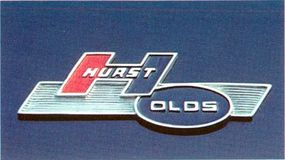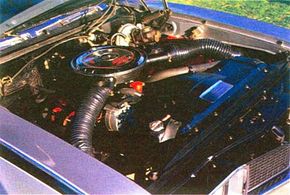To enthusiasts, Hurst, a transmission builder that lent its name to the 1968-1969 Oldsmobile Hurst/Olds, was synonymous with precise gear changes.
Advertisement
Hurst Performance Products had been supplying its special brand of slick-action gearshifts to a number of manufacturers -- including Oldsmobile -- for some time. Anyone who wanted to run through the gears with the greatest of ease simply called upon Hurst for help.
Now, Hurst undertook an even closer tie with the hottest "Youngmobile." Result: one of the most remarkable Oldsmobile models of them all.
As described by Terry Boyce and Robert Lichty in "Hurst Heritage," Jack "Doc" Watson first created a one-off for Hurst, based on a 4-4-2 coupe. John Demmer, a Lansing industrialist, saw this prototype of what would become an "executive hot rod" and offered to construct production versions at his own factory.
John Beltz, Oldsmobile's chief engineer, liked the idea, believing it could help boost the company's performance image. Among those working alongside Watson on the project was one Robert Stempel, who later rose through the corporate ranks and served as GM's chairman. Watson explained to Motor Trend that he "wanted a car that would give all the acceleration you want in the straight, but wouldn't look like a floundering duck in the corners."
Demmer's plant installed 455-cubic-inch Toronado engines in the Cutlass bodies, circumventing GM's ban on powerplants larger than 400 cubic inches in mid-size cars. Coded W-45, the 390-horsepower engines (producing 500 pounds/feet of torque) carried 4-4-2 heads, Force-Air Induction, and a load of internal modifications.
Long flexible tubes shot air through dual snorkels from ducts under the bumper. A less-wild variant with air conditioning also was created.
Except for the very first example, each carried Turbo Hydra-Matic, controlled by Hurst's own Dual-Gate gearshift, which allowed either fully manual or automatic operation.
Base color was Peruvian Silver (as used on the 1968 Toronado) with black stripes and panels, plus white pinstriping. Because the production line wasn't ready until April 1968, workers had to rush to get the first group out the door as 1968s. One man, Paul Hatton, did virtually all the pinstriping on that batch of 515 cars.
Of the total, only 56 were pillared coupes; all the rest were hardtops. Each wore a black-out grille and large black rear panel. Hurst promised "all the muscle characteristics of the finest super car, but without the objectionable interior noise and choppy ride."
Find out about the Hurst/Olds performance chops by continuing to the next page.
For more information on cars, see:
- Classic Cars
- Muscle Cars
- Sports Cars
- Consumer Guide New Car Search
- Consumer Guide Used Car Search
Advertisement



